Original Title: "Is $106,000 the 'Death Line'? With China and the U.S. Reaching a Truce, Why Did Bitcoin Take a Plunge?"
Original Author: Lawrence, Mars Finance
I. Agreement Implementation: The "Seesaw Effect" Under Risk Preference Shift
On May 12, Beijing time, the U.S. and China reached a tariff truce agreement in Geneva, pressing the "pause button" on trade frictions that have lasted for several years. The agreement includes a 90-day suspension of 24% mutual tariffs, retaining a 10% base tax rate, and establishing a third-country consultation mechanism. This development directly stimulated a 3% jump in S&P 500 index futures and a 4.35% increase in the Nasdaq. However, Bitcoin unexpectedly fell back to a low of $100,700 after touching $105,720, forming a rare "divergence" pattern between stocks and cryptocurrencies. As of the time of writing, BTC has rebounded to $102,600.
· Data Insight:
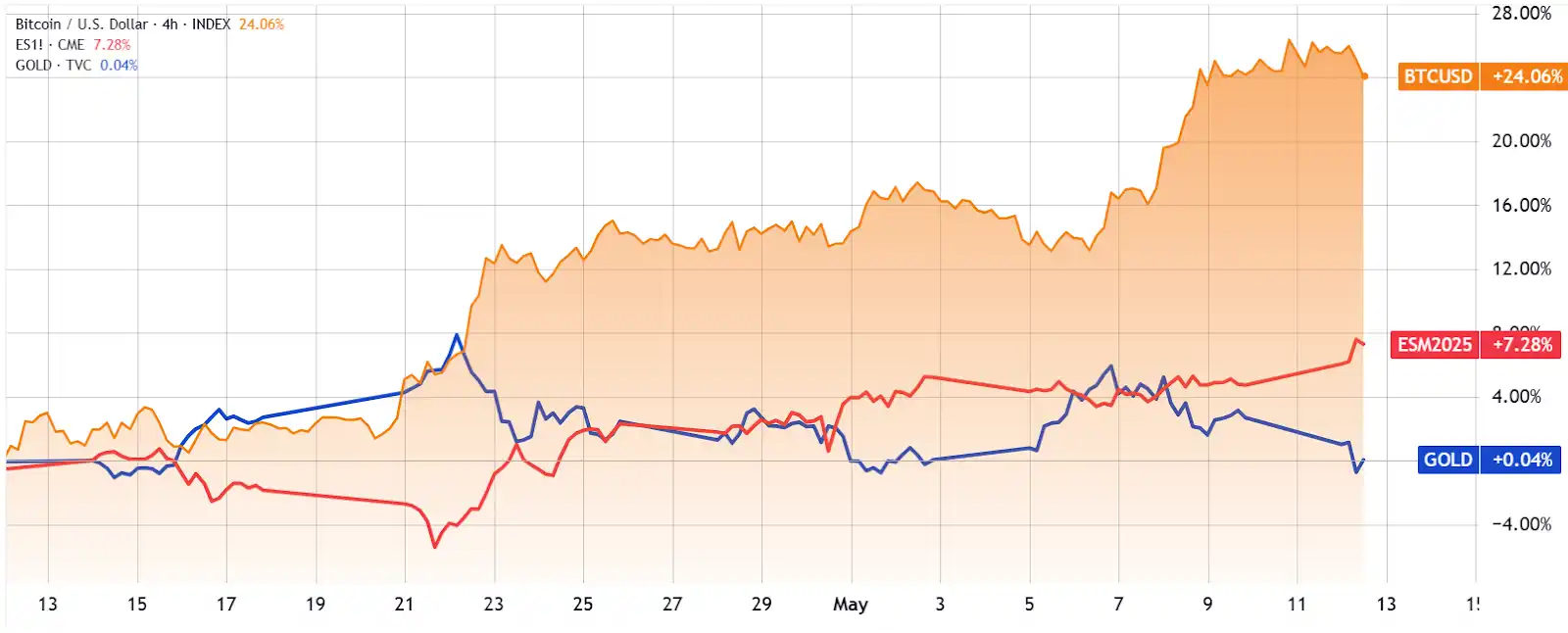
Bitcoin/USD (orange) compared to S&P 500 index futures (red) and gold (blue). Source: TradingView
**· Short-term Fund Diversion: ** In the past 30 days, Bitcoin has risen 24%, while the S&P 500 has only increased by 7%, and gold prices have remained flat. As the trade agreement reduces market uncertainty, some funds have flowed back from crypto assets to traditional stock markets, causing the 30-day correlation between Bitcoin and traditional markets to rise to a historical high of 83% 1.
· Institutional Holdings as a "Double-Edged Sword": MicroStrategy and its affiliated institutions recently increased their holdings by 13,390 BTC, bringing their total holdings to 1.19 million BTC (accounting for 6% of the circulating supply). Although this is seen as a long-term positive, the market is concerned that their concentrated holdings may pose a "price manipulation" risk, especially as the average cost rises above $100,000, increasing short-term selling pressure expectations.
II. Technical Game: $106,000 as the "Bull-Bear Watershed"
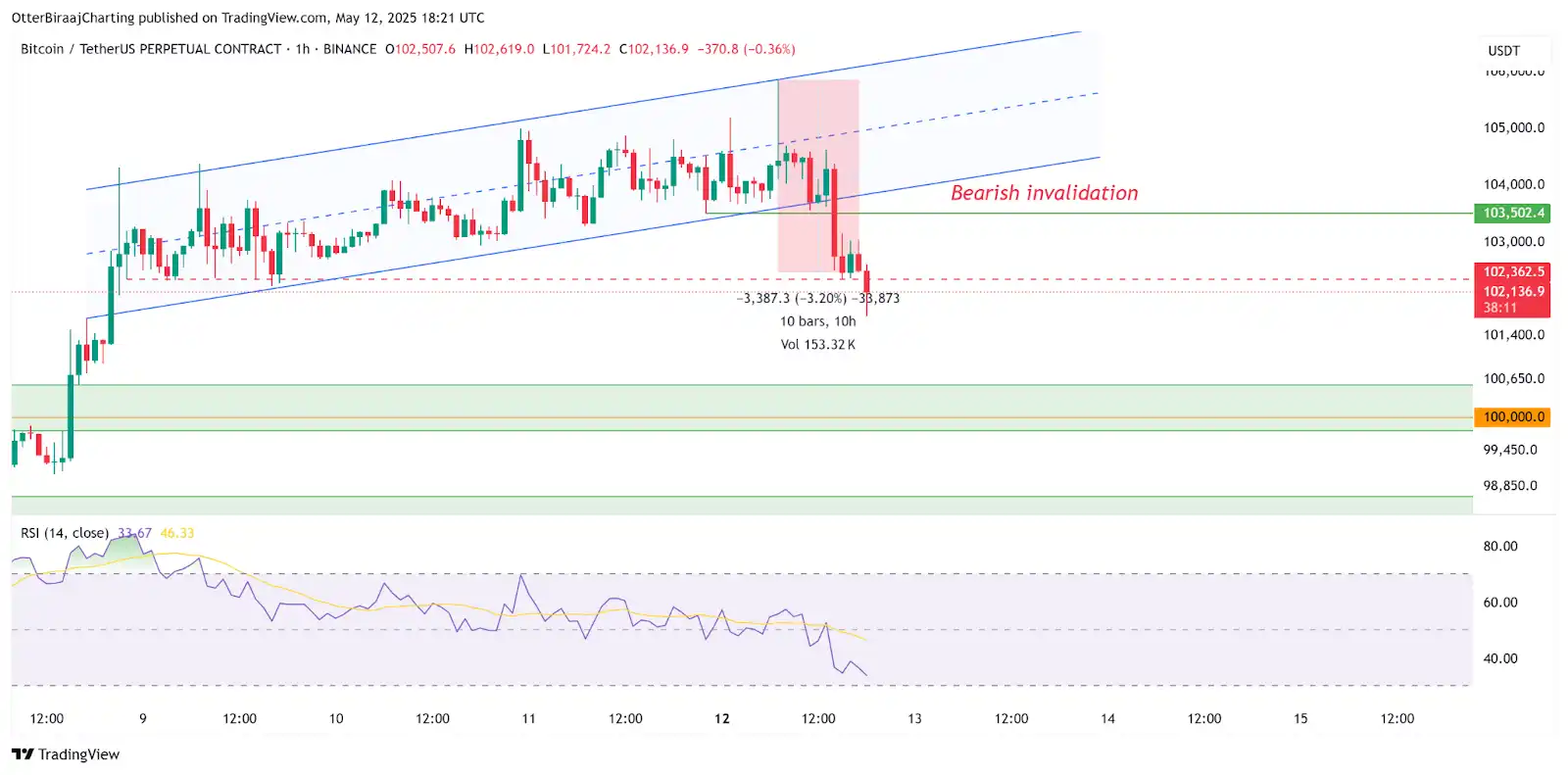
On May 12, Bitcoin briefly broke through $105,800 before quickly falling back to $101,400, with the 1-hour K-line chart showing the price breaking below the lower edge of the ascending channel.
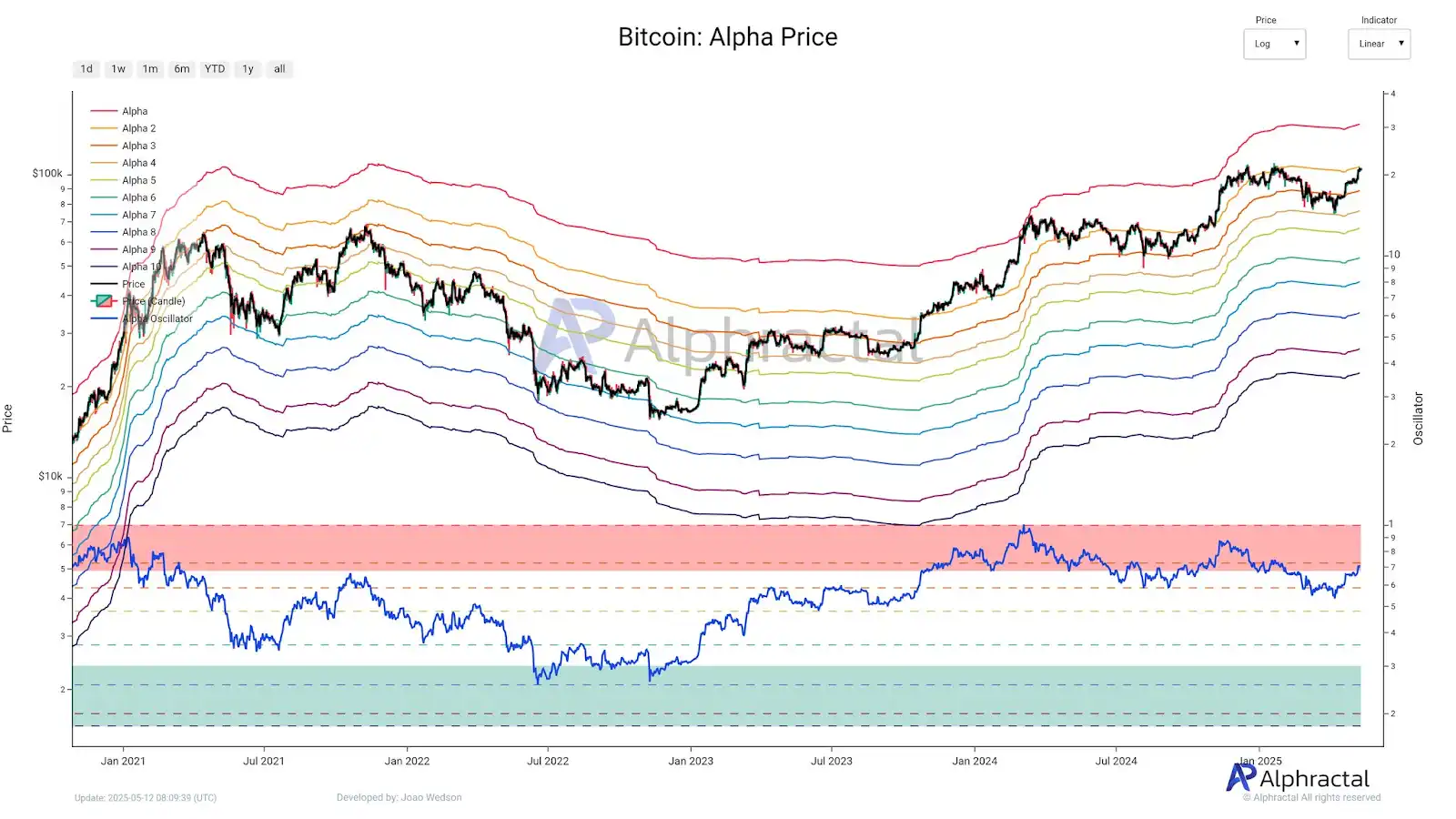
Bitcoin Alpha price level. Source: X.com
Joao Wedson, CEO of Alphractal, pointed out that there is a resistance zone around the "Alpha price" near $106,000, where long-term holders may trigger profit-taking.
· Key Risk Indicators:
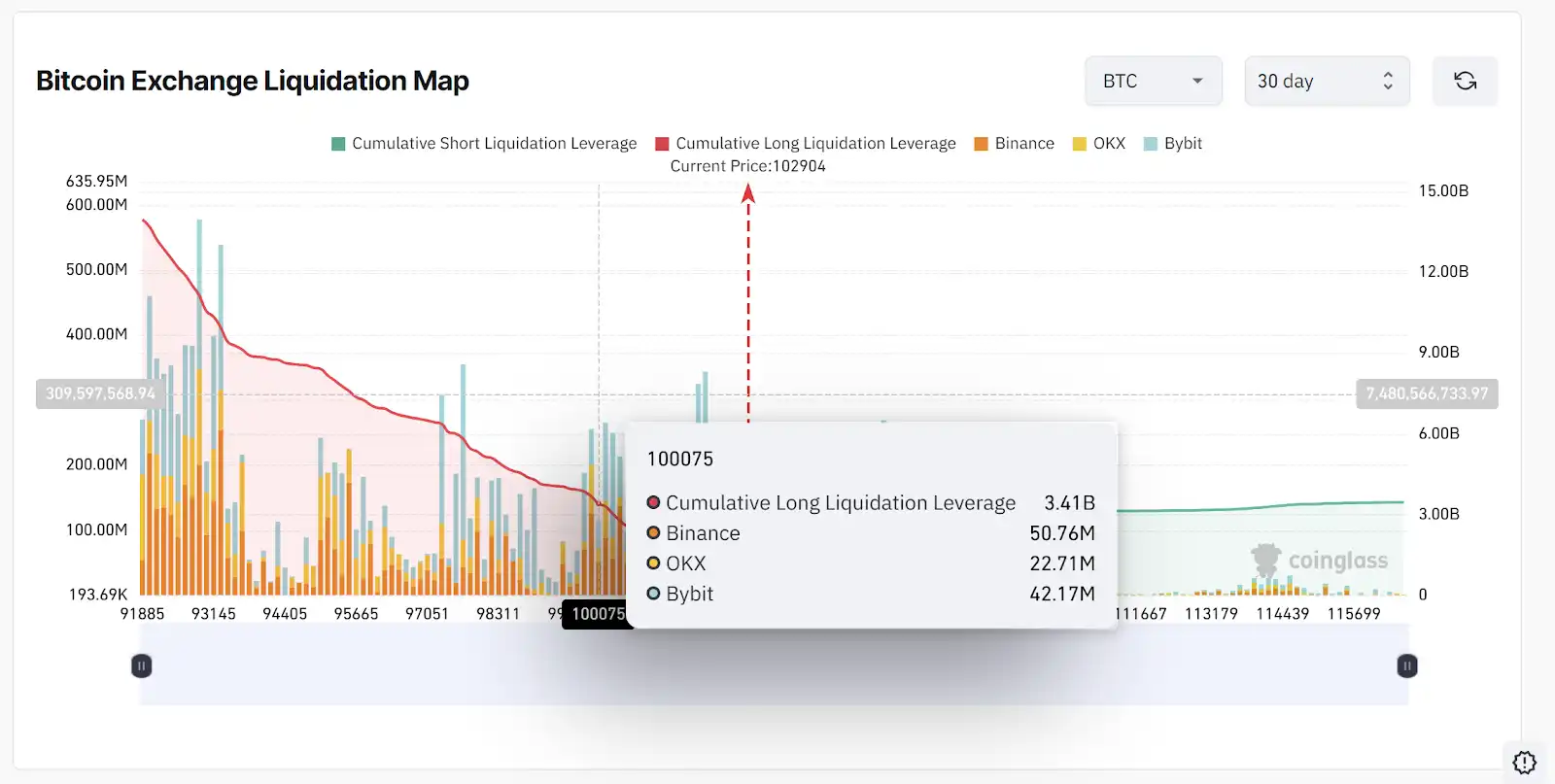
· Liquidation Magnet Effect: CoinGlass data shows that if the price falls to $100,000, approximately $3.4 billion in long leveraged positions will face strong liquidation risks, creating short-term downward pressure.
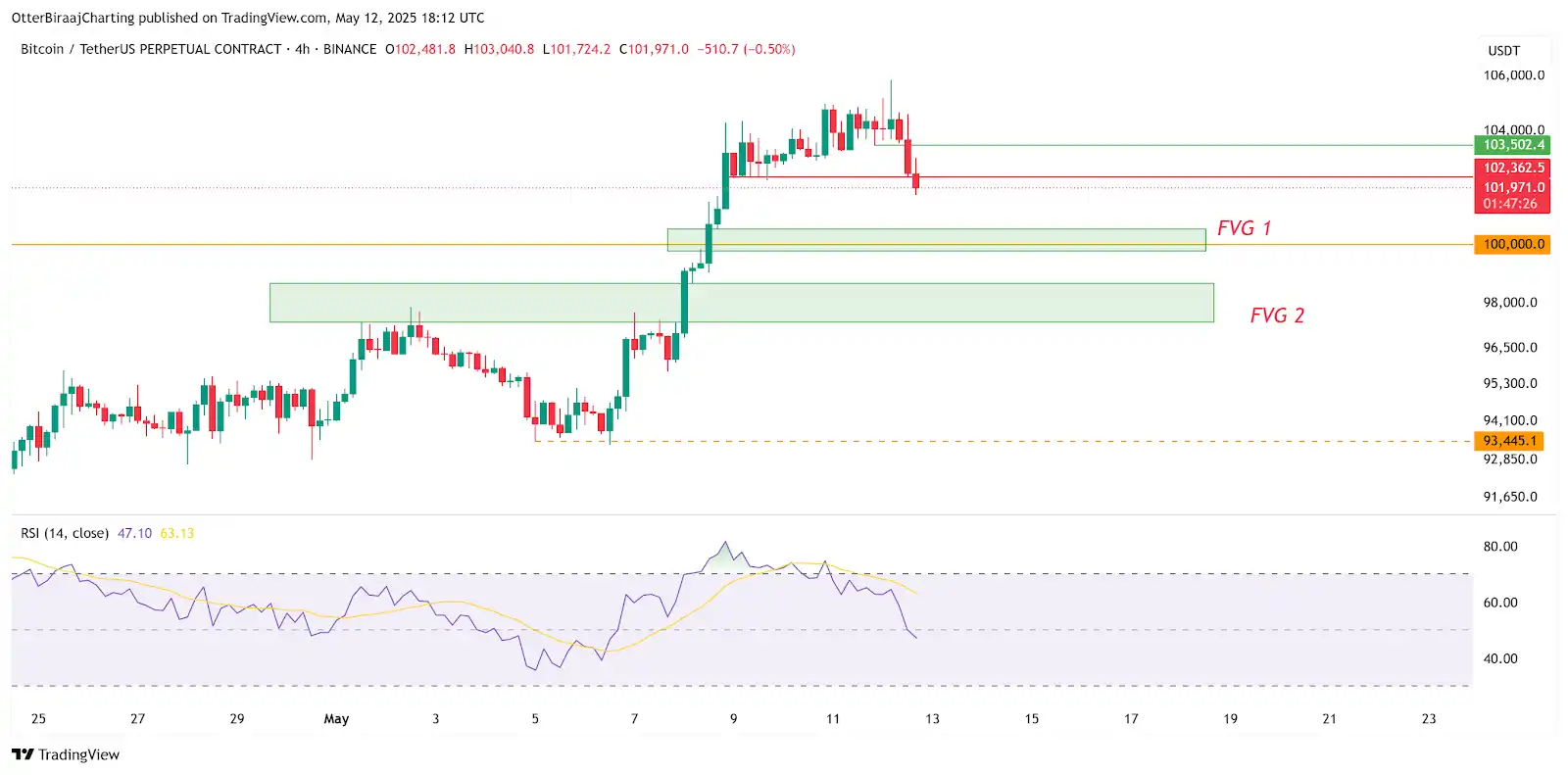
· Support Range Verification: The four-hour chart shows that the $99,700-$100,500 range is a recent "fair value gap" (FVG). If it breaks below this range, it may further test the $97,363-$98,680 range, with a potential pullback of 8%.
III. Macroeconomic Variables: The "Butterfly Effect" of CPI Data and the Dollar Index

The U.S. April CPI data, released on May 13, has become the market focus. The March CPI recorded 2.4% (below the expected 2.5%). If the April data continues the downward trend, it may strengthen expectations for a Federal Reserve interest rate cut, benefiting risk assets; conversely, if inflation rebounds, the dollar index (DXY) may break through the 30-day high, putting pressure on Bitcoin.
Correlation Logic:
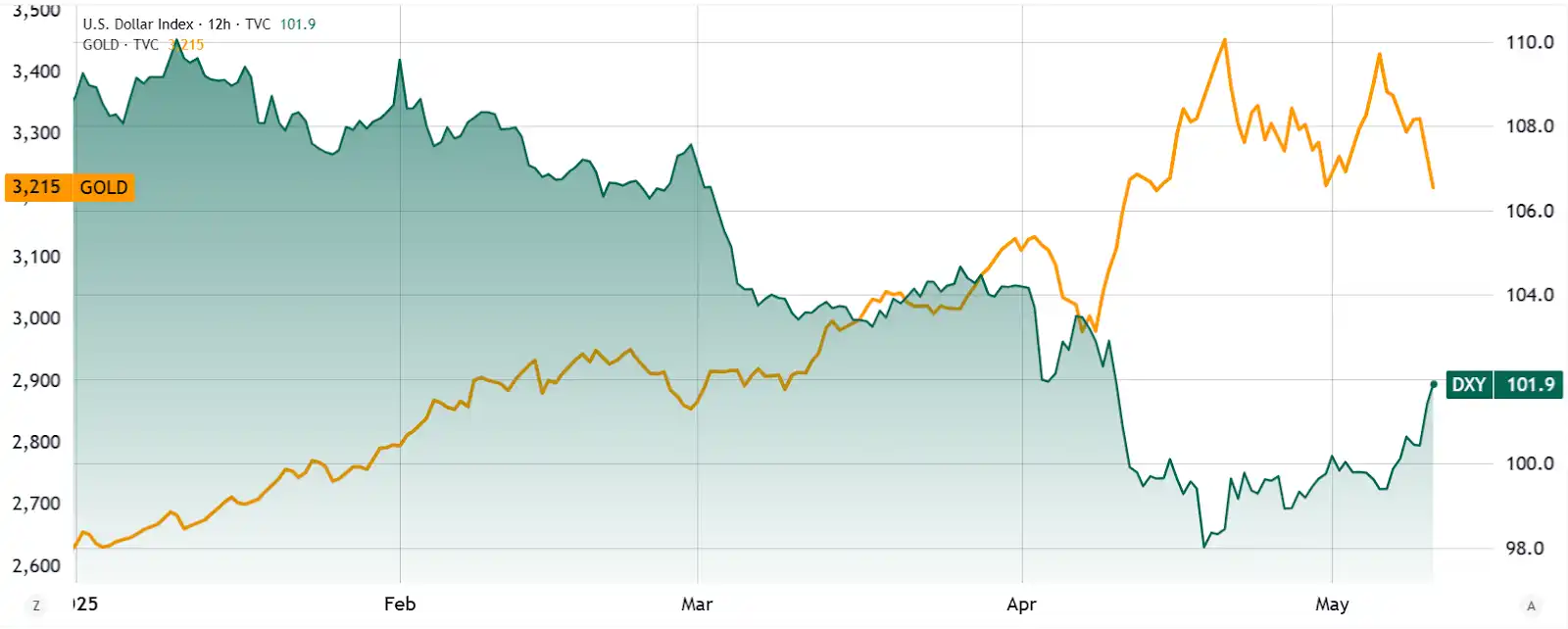
Gold/USD (left) vs. Dollar Index (right). Source: TradingView
· Gold and BTC as "Safe-Haven Alternatives": On May 12, gold fell 3.4%, and DXY rose to a 30-day high, reflecting investors shifting from scarce assets to the dollar and stock market. This rotation validates the short-term positive correlation between Bitcoin and gold.
· Long-term Narrative Amid Dollar Hegemony Erosion: Despite short-term setbacks, the "local currency settlement pilot" clause in the agreement may weaken the dollar's position in trade settlements. Historical data shows that during the trade war from 2018 to 2020, Bitcoin initially pulled back but eventually broke through $20,000, and its "decentralized settlement tool" attribute may regain attention in the medium to long term.
IV. Market Sentiment Divergence: Whale Retreat and ETF Fund Inflows as "Divergence Signals"
On-chain data shows that the number of addresses holding over 10,000 BTC has decreased by 12, and the trading platform reserves have dropped by 1.8%, suggesting that some large holders are choosing to take profits.
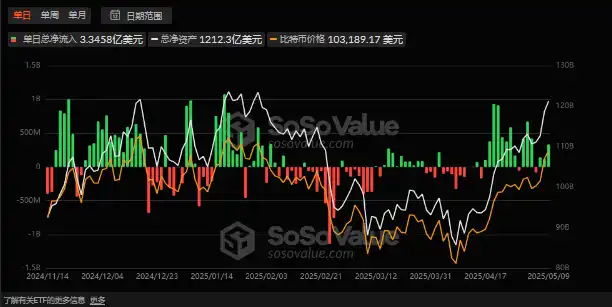
However, U.S. spot Bitcoin ETFs saw a net inflow of $2 billion from May 1-9, indicating that institutional funds are still showing a "buy more as prices rise" trend.
Structural Contradiction Analysis:
· Retail Leverage Risk: Currently, altcoin trading volume has surged by 280%, but HTX Research points out that its leverage ratio is still within a safe range. In contrast, Bitcoin contract holdings are concentrated around $98,000-$100,000, which could easily trigger a "double kill" for both bulls and bears.
· Institutional "Bottom Support" Logic: Wall Street giants like BlackRock are forming a liquidity monopoly through ETFs, compressing Bitcoin's daily volatility from 18% to 9%, gradually shifting pricing power towards traditional capital.
V. Future Projections: Short-term Fluctuations and Long-term Paradigm Shifts
· Scenario One (Optimistic): If CPI data comes in below expectations, coupled with rising expectations for a Federal Reserve interest rate cut, Bitcoin may quickly recover above $105,000 and challenge the $120,000 mark. Institutional accumulation and ETF inflows will build a "moat," making the probability of falling below $100,000 less than 20%.
· Scenario Two (Cautious): If CPI rebounds and strengthens the dollar, BTC may test the $97,000-$99,000 support level. However, MicroStrategy's $21 billion capital increase provides them with "ammunition," limiting selling pressure from long-term holders, and after a pullback, it may enter a $90,000-$110,000 range for fluctuations.
Conclusion: Seeking Certainty Amid Uncertainty
The short-term volatility of Bitcoin is essentially a tug-of-war over pricing power between traditional finance and the crypto ecosystem. For investors, it is crucial to be wary of leverage risks and policy variables, but more importantly, to focus on the evolution of its underlying logic: as tariff barriers collide with blockchain technology, Bitcoin is evolving from "digital gold" to a "cross-border value transfer protocol."
The true victory of Bitcoin lies not in defeating fiat currency, but in proving that humanity needs diversified value anchors.
免责声明:本文章仅代表作者个人观点,不代表本平台的立场和观点。本文章仅供信息分享,不构成对任何人的任何投资建议。用户与作者之间的任何争议,与本平台无关。如网页中刊载的文章或图片涉及侵权,请提供相关的权利证明和身份证明发送邮件到support@aicoin.com,本平台相关工作人员将会进行核查。




